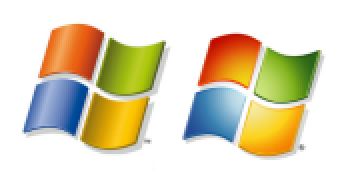Microsoft released Windows Vista Service Pack 1 and Windows XP Service Pack 3 to manufacturing in the first half of 2008, and subsequently made the service packs available both as standalone downloads and via Windows Update, Microsoft Update and Automatic Updates. Soon enough, there will be nowhere to hide from the final wave of Vista SP1 and XP SP3 that the Redmond company released through its update infrastructure. This because the software giant is gearing up for the expiration of the last barrier standing in the way of automatic downloads and upgrades to SP1 for Windows Vista and to SP3 for Windows XP, namely the Service Pack Blocker Tool.
“The Service Pack Blocker Tool temporarily prevents the installation of a service pack through Windows Update, typically for one year after general availability of the service pack. We are announcing the upcoming expiration dates for the Service Pack Blocker Tool for Windows Vista SP1 and Windows XP SP3: Windows Vista SP1: April 28, 2009 - Windows XP SP3: May 19, 2009. After April 28th, Windows Vista SP1 will be delivered via Windows Update. And after May 19th, Windows XP SP3 will also be delivered via Windows Update,” revealed Brandon LeBlanc, Windows Communications Manager on the Windows Client Communications Team.
The dates correspond to those when Microsoft debuted the automatic distribution of Vista SP1 and respectively XP SP3 through WU. Vista RTM and XP users that did not deploy the latest service packs manually were served the upgrades through Windows Update. In scenarios in which users had Automatic Updates settings enabled, SP1 for Vista and SP3 for XP were delivered and installed automatically. At the same time, Microsoft offered the Service Pack Blocker Tool designed to patch both Vista and XP and to make them immune to SP1 and SP3 respectively. However, the Redmond company informed from the get go that the blocking would be temporary and that the tool was set to expire after a year since the service packs' respective releases.
“Enterprises currently using the service pack blocker tool for either Windows Vista SP1 or Windows XP SP3 will be prompted to install Windows Vista SP1 or Windows XP SP3 as appropriate. Microsoft recognizes the need for IT pros to have this type of information in advance and wants to provide them with an early heads-up to ensure they're prepared to deploy the appropriate service pack(s) when the blockers expire,” LeBlanc added.
At this point in time, Microsoft indicated that there is no alternative solution to blocking the delivery and automatic upgrades of SP1 for Vista and SP3 for XP past April 28 and May 19. The Redmond company is also committed to letting blockers expire and warned customers that have so far failed to upgrade Vista and XP to the latest service packs to make the move as soon as possible.
“Service packs will not automatically install on a machine even after the Service Pack Blocker tool expires. For service packs, you must accept the offering before installation will start. If Automatic Update is turned on, WU will alert you that it has an important update to install. If you don't want to install the update (service pack), simply decline to install and/or hide the update. If you do not have AU turned on, the service pack will not be offered until you open Windows Update and 'Check for Updates',” LeBlanc stated.
Windows Vista Service Pack 1 (SP1) RTM is available for download here.
Windows XP SP3 is available for download here.
Windows Service Pack Blocker Tool Kit can be downloaded from here.

 14 DAY TRIAL //
14 DAY TRIAL //